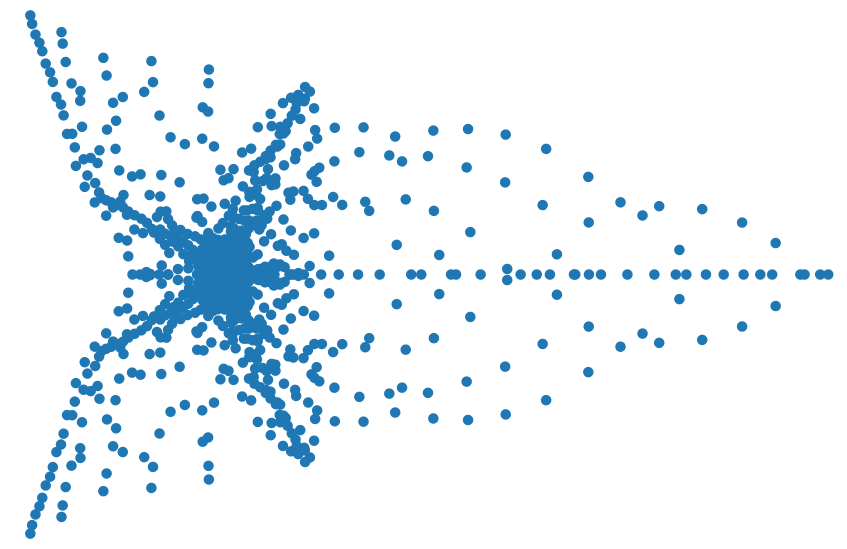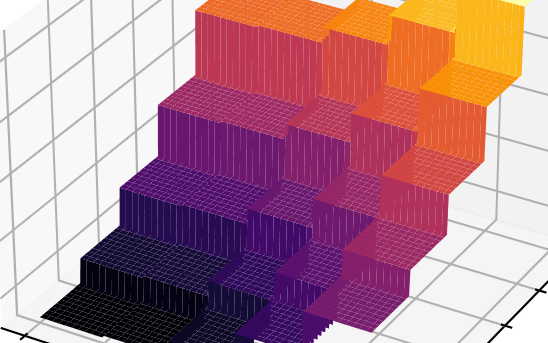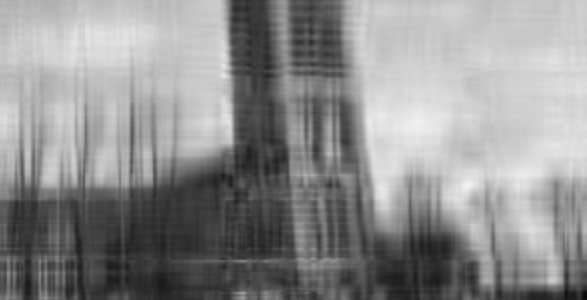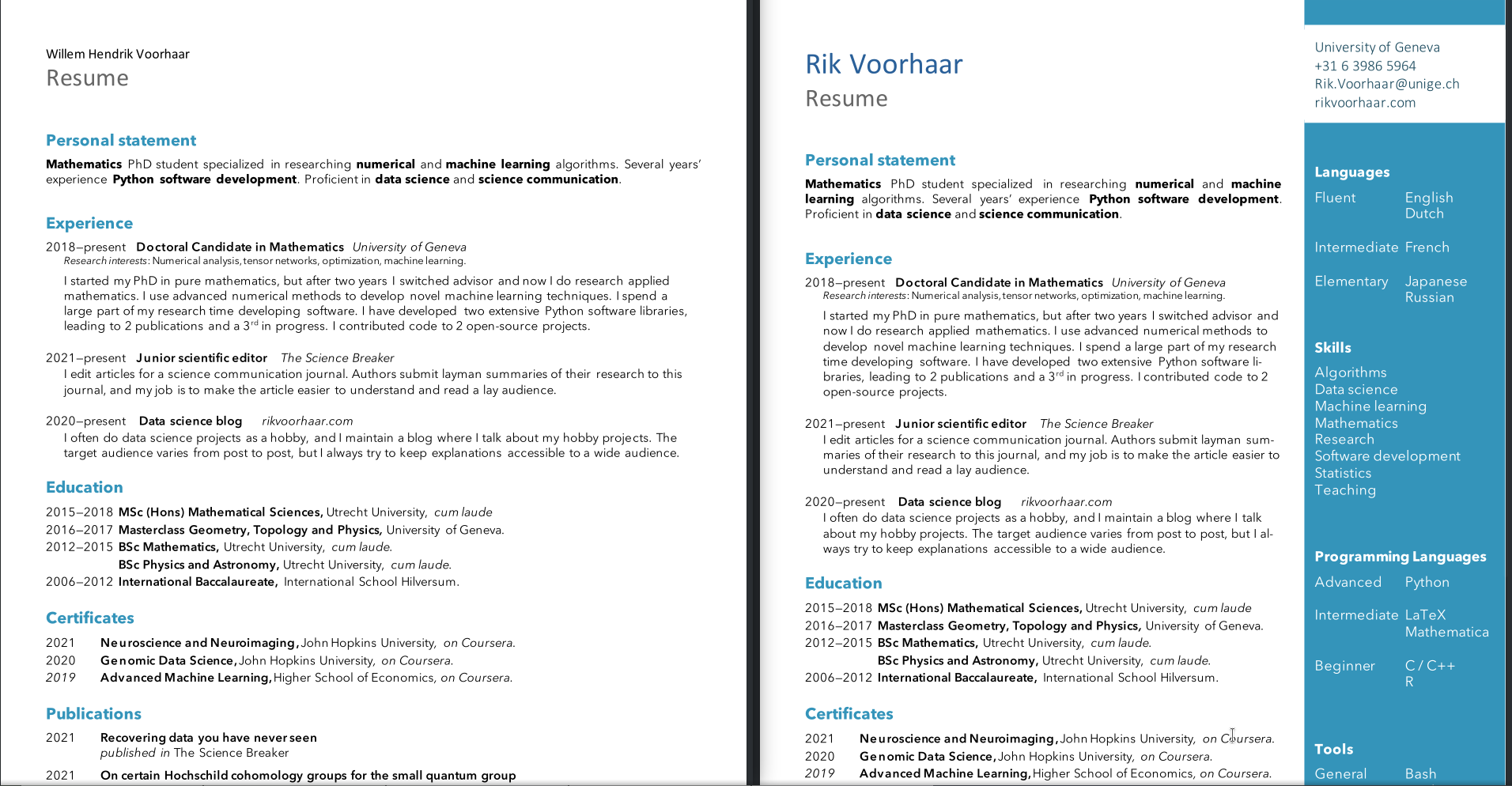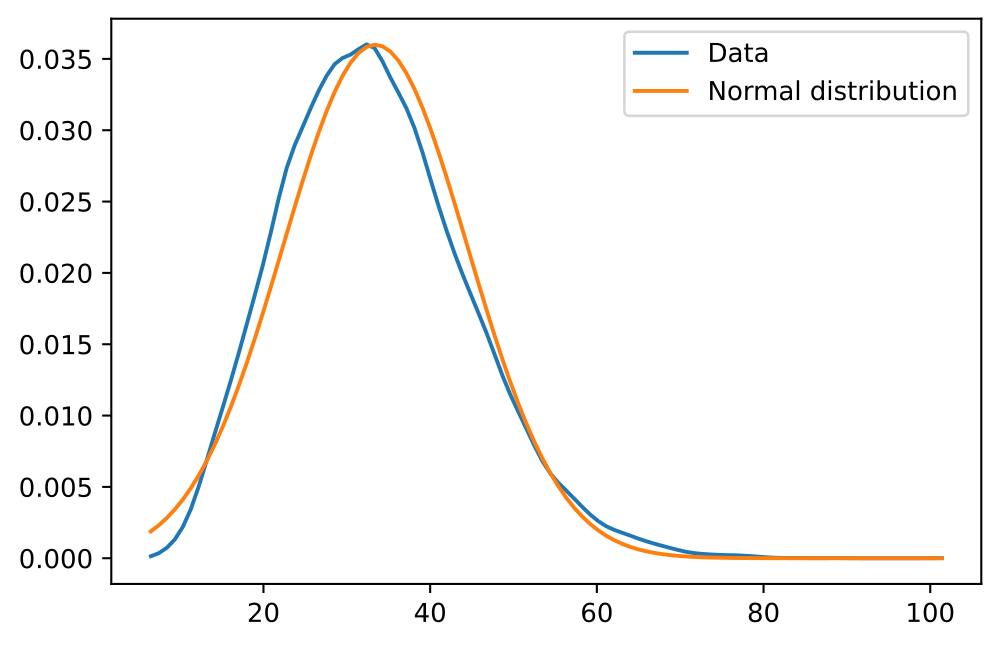7th of October, 2023
In my first dive into Rust, I implemented an unscented Kalman filter in and made it 20x faster than the equivalent Python implementation. read more ...
1st of May, 2023
I made an interactive dashboard for this website, and here is the story of how I did it. read more ...
26th of February, 2023
Read this blog post if you're curious what I worked on during my PhD! read more ...
29th of March, 2022
Linear least-squares system pop up everywhere, and there are many fast way to solve them. We'll be looking at one such way: GMRES. read more ...
10th of March, 2022
We recently made a paper about supervised machine learning using tensors, here's the gist of how this works. read more ...
26th of September, 2021
A lot of data is naturally of 'low rank'. I will explain what this means, and how to exploit this fact. read more ...
29th of August, 2021
Parsing and editing Word documents automatically can be extremely useful, but doing it in Python is not that straightforward. read more ...
31st of May, 2021
Finally, let's look at how we can automatically sharpen images, without knowing how they were blurred in the first place. read more ...
2nd of May, 2021
Deconvolving and sharpening images is actually pretty tricky. Let's have a look at some more advanced methods for deconvolution. read more ...
9th of April, 2021
In order to automatically sharpen images, we need to first understand how a computer can judge how 'natural' an image looks. read more ...
13th of March, 2021
Deconvolution is one of the cornerstones of image processing. Let's take a look at how it works. read more ...
13th of February, 2021
I have 15 years worth of email traffic data, let's take a closer look and discover some fascinating patterns. read more ...
9th of November, 2020
We use exams to determine how much a student knows, but exams aren't perfect. How can we estimate the uncertainty in students' exams scores? read more ...
26th of August, 2020
Cross validation is extremely important, but how should we choose the size of our validation and test sets? read more ...
12th of August, 2020
I use last.fm to track my music listening. Let's look at my data to discover how my musical preferences evolve over time. read more ...
10th of August, 2020
Normally distributed data is great, but how do you know whether your data is normally distributed? read more ...
20th of June, 2020
Judging in figure skating is biased. Let's use data science to figure out just how bad the issue is. read more ...
Rik Voorhaar © 2024


